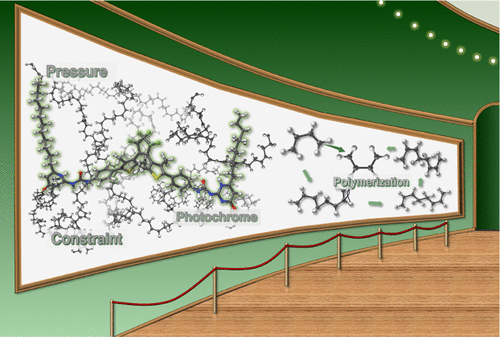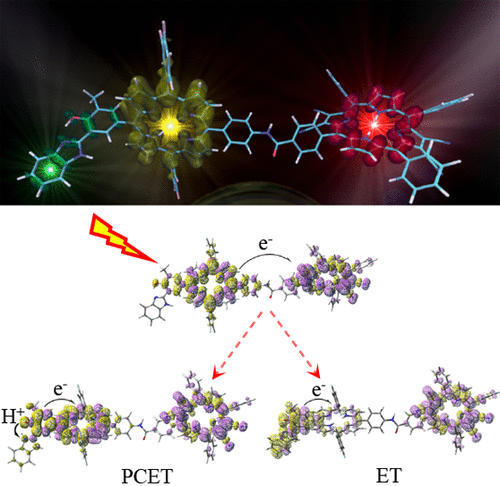Modeling Photonastic Materials: A First Computational Study
Journal of Chemical Theory and Computation
DOI: 10.1021/acs.jctc.0c00762

Photonastic materials present a directional and repeatable deformation of the material shape due to transduction from light energy to mechanical energy. Among these materials, light-responsive polymers, composed of photochromic molecules embedded in a polymer matrix, are of high interest. The present work aims at laying the foundation stone of the modeling of the photomechanical behavior of such systems by proposing a computational strategy that is able to investigate (i) the impact of the polymer matrix on the photochromic properties of a dithienylethene (DTE) switch and (ii) the impact of the photochromic reaction on the polymer environment. Contrary to previous approaches, the present model is able to propose a realistic arrangement of the photochrome embedded in the polymer film, thanks to the adaptation of the so-called “controlled-like polymerization algorithm” [Lemarchand, C. A.; J. Chem. Phys. 2019, 50, 224902]. Our strategy relies on molecular dynamics (MD) simulations and time-dependent density functional theory (DFT) calculations. Careful analysis of MD trajectories and comparison with simulations in solution have shown the rigidification of the DTE molecule due to the presence of the polymer chains, which hindered the interconversion between the DTE open-form isomers and can probably modify the photocyclization quantum yield. Besides, the UV–vis absorption properties of the DTE open-form isomers are more impacted by the polymer embedding than its closed-form counterpart. Concerning the impact of the photoreaction on the polymer matrix, the time evolution of the pressure tensor and of the atomic displacements in the matrix have shown that (i) the cyclization reaction has a negligible impact; (ii) the cycloreversion reaction induces a locally large and anisotropic pressure increase and leads to a collective displacement of the polymer matrix away from the reactive center; and (iii) the characteristic time scale associated with these coupled processes is below 1 ps. Therefore, the two processes involved in photonastic motions, namely, the photoreaction and the relaxation of the polymer matrix after the photoswitch structural change, cannot be decoupled.




